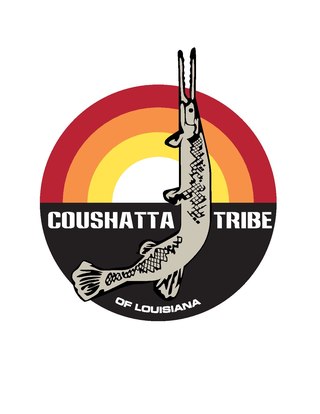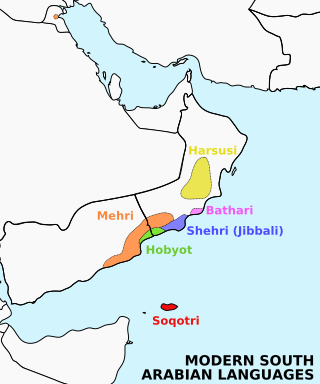Related Research Articles

Tutchone is an Athabaskan language spoken by the Northern and Southern Tutchone First Nations in central and southern regions of Yukon Territory, Canada. Tutchone belongs to the Northern Athabaskan linguistic subfamily and has two primary varieties, Southern and Northern. Although they are sometimes considered separate languages, Northern and Southern Tutchone speakers are generally able to understand each other in conversation, albeit with moderate difficulty.

An endangered language or moribund language is a language that is at risk of disappearing as its speakers die out or shift to speaking other languages. Language loss occurs when the language has no more native speakers and becomes a "dead language". If no one can speak the language at all, it becomes an "extinct language". A dead language may still be studied through recordings or writings, but it is still dead or extinct unless there are fluent speakers. Although languages have always become extinct throughout human history, they are currently dying at an accelerated rate because of globalization, mass migration, cultural replacement, imperialism, neocolonialism and linguicide.

An extinct language is a language that no longer has any first-language or second-language speakers, especially if the language also has no living descendants. In contrast, a dead language is a language that no longer has any first-language speakers, but does have second-language speakers, such as Latin. A dormant language is a dead language that still serves as a symbol of ethnic identity to an ethnic group, these languages are often undergoing a process of revitalisation. Languages that have first-language speakers are known as modern or living languages to contrast them with dead languages, especially in educational contexts.
Language revitalization, also referred to as language revival or reversing language shift, is an attempt to halt or reverse the decline of a language or to revive an extinct one. Those involved can include linguists, cultural or community groups, or governments. Some argue for a distinction between language revival and language revitalization. There has only been one successful instance of a complete language revival, the Hebrew language, creating a new generation of native speakers without any pre-existing native speakers as a model.
Hawaiʻi Sign Language, also known as Hoailona ʻŌlelo and Old Hawaiʻi Sign Language, is an indigenous sign language native to Hawaiʻi. Historical records document its presence on the islands as early as the 1820s, but HSL was not formally recognized by linguists until 2013.
The Endangered Language Fund (ELF) is a small non-profit organization based in New Haven, Connecticut. ELF supports endangered language maintenance and documentation projects that aim to preserve the world's languages while contributing rare linguistic data to the scientific community.

The Coushatta Tribe of Louisiana is one of three federally recognized tribes of Koasati people. They are located in Allen and Jefferson Davis Parishes, Louisiana. The tribe hosts an annual pow wow during the second weekend in June.
Yuracaré is an endangered language isolate of central Bolivia in Cochabamba and Beni departments spoken by the Yuracaré people.
Iquito is a highly endangered Zaparoan language of Peru. Iquito is one of three surviving Zaparoan languages; the other two being Záparo, with 1-3 speakers, and Arabela with about 75 speakers. Three extinct languages are also considered to be Zaparoan: Andoa, Aushiri, and Cahuarano. Some classifiers also consider Omurano to be Zaparoan. Other names used for the language include Iquita, Ikito, Amacacore, Hamacore, Quiturran, and Puca-Uma, although Iquito is the most common.

Hobyót is one of the six Modern South Arabian languages (MSAL), a group of South Semitic languages spoken in the southern Arabian Peninsula. A severely-endangered Semitic language on the verge of extinction, it is spoken in a small area between Yemen and neighboring Oman. The speaking population is estimated to be about 1000 in Oman and 40 in Yemen, though the true number may be less.
The Nyingwom or Kam language is a Niger-Congo language spoken in eastern Nigeria. Blench (2019) lists speakers residing in the main villages of Mayo Kam and Kamajim in Bali LGA, Taraba State. Lesage reports that Kam is spoken in 27 villages of Bali LGA.

Yucuna (Jukuna), also known as Matapi, Yucuna-Matapi, and Yukunais, is an Arawakan language spoken in several communities along the Mirití-Paraná River in Colombia. Extinct Guarú (Garú) was either a dialect or a closely related language. Yucuna is a polysynthetic language, and it uses SVO word order.
The LINGUIST List is an online resource for the academic field of linguistics. It was founded by Anthony Aristar in early 1990 at the University of Western Australia, and is used as a reference by the National Science Foundation in the United States. Its main and oldest feature is the premoderated electronic mailing list, with subscribers all over the world.
Colleen M. Fitzgerald is an American linguist who specializes in phonology, as well as language documentation and revitalization, especially with Native American languages.
Peter Kenneth Austin, often cited as Peter K. Austin, is an Australian linguist, widely published in the fields of language documentation, syntax, linguistic typology and in particular, endangered languages and language revitalisation. After a long academic career in Australia, Hong Kong, the US, Japan, Germany and the UK, Austin is emeritus professor at SOAS University of London since retiring in December 2018.
The Institute on Collaborative Language Research or CoLang is a biennial training institute in language documentation for any person interested in community-based, collaborative language work. CoLang has been described as part of a modern collaborative model in community-based methodologies of language revitalization and documentation.
Megan Jane Crowhurst is an Australian- and Canadian-raised linguist and Professor of Linguistics at the University of Texas at Austin in the United States.
Helen Aristar-Dry is an American linguist who currently serves as the series editor for SpringerBriefs in Linguistics. Most notably, from 1991 to 2013 she co-directed The LINGUIST List with Anthony Aristar. She has served as principal investigator or co-Principal Investigator on over $5,000,000 worth of research grants from the National Science Foundation and the National Endowment for the Humanities. She retired as Professor of English Language and Literature from Eastern Michigan University in 2013.
Patience Louise "Pattie" Epps is an American linguistics professor and researcher at the University of Texas at Austin whose main research focus is on the Naduhup language family, which consists of four extant languages in the Amazon.
Doris Lander Payne is an American linguist and professor emerita of linguistics at the University of Oregon. Her research specializes in the morphosyntax of understudied languages, including indigenous languages of the Americas, Nilotic languages and especially Maasai of East Africa, languages of West Africa, Austronesian languages, and others.
References
- ↑ "Documenting Endangered Languages".
- ↑ Ethnologue: Languages of the World https://www.ethnologue.com/endangered-languages
- ↑ "Federal Agencies Take Steps to Document Endangered Languages".
- ↑ Foundation for Endangered Languages http://www.ogmios.org/ogmios_files/245.htm
- ↑ "Documenting Endangered Languages (DEL) nsf04605".
- ↑ The Society for the Study of the Indigenous Languages of the Americas http://www.ssila.org/2016/01/05/webinar-on-documenting-endangered-languages-program-at-nsf/
- ↑ "Documenting Endangered Languages | NSF - National Science Foundation".
- ↑ Austin, Peter K., ed. 2010. Lectures in language documentation and description. Language Documentation and Description 7. London: School of Oriental and African Studies, Univ. of London http://www.hrelp.org/events/workshops/aaken2013/assets/Austin_Language_Documentation-Oxford_Bibliographies.pdf